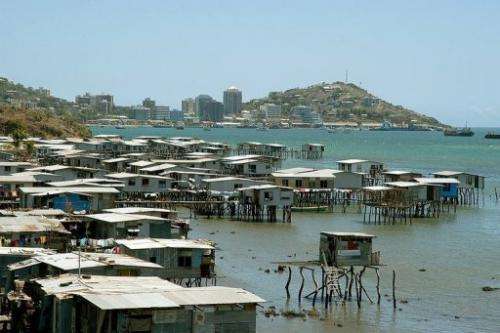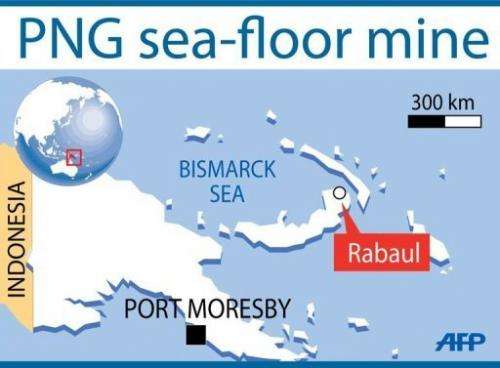World's first sea-floor mine signs first customer

Canada-based mining firm Nautilus Minerals said Tuesday it had signed China's Tongling Nonferrous Metals Group as the first customer of its pioneering Papua New Guinean sea-floor mine.
Nautilus, which is listed on the Canadian and London stock exchanges and has offices in Australia, said Tongling had agreed to buy 1.1 million tonnes of sulphides per annum from its Solwara 1 undersea mine for three years.
The project, in the minerals-rich Manus basin of PNG's Bismarck Sea, is claimed by Nautilus as the world's first commercial sea-floor mine, and is slated to begin production in the fourth quarter of 2013.
"We have now closed the value chain on the project, established our first customer for seafloor massive sulphides and look forward to building a long-term relationship with Tongling," said Nautilus CEO Stephen Rogers.
Rogers said the securing of Anhui-based copper giant Tongling showed the "considerable interest in the high-grade massive sulphides being found by the emerging sea-floor resource production industry."
Located about 50 kilometres (31 miles) north of New Britain's port city of Rabaul, Solwara 1 is a deposit of what is known as "sea-floor massive sulphides" -- rocks containing high grades of copper, gold, zinc and silver.

The deposits form at hydrothermal vents, which spew the minerals from fissures in the Earth's crust, and the Manus basin is a lucrative site because there are active seams at relatively shallow depths.
Sea-floor mining is a new industry that has, until now, been little explored due to the abundance of untapped mineral sources on land and the unknown risks associated with undersea environments.
But Nautilus believes up to one-third of the world's minerals could eventually come from the sea floor, with land reserves being run down and demand ramping up for resources, particularly from China.
With the encouragement of the government, Chinese companies have moved to globally source raw materials needed to fuel the world's second largest economy.
Remote-controlled robots will drill for sulphide deposits on the rocky ocean bed 1,600 metres (5,250 feet) below sea level and a separate "collection" machine will pump the material to a support vessel at the surface.
The sulphide slurry will then be dewatered for transport to Rabaul where it will be shipped to China.
The robots were specially designed for Nautilus based on machines in use in the deepwater oil and gas, terrestrial mining and marine dredging industries, and are currently under construction.
Nautilus said Tongling would import the sulphide concentrate into China where it would be processed into copper concentrate for in-house smelting, with the purchase price to be determined by "the quality of the copper concentrate produced."
PNG has granted Nautilus a 25-year mining permit for the site, expiring in 2035, and the mine is targeting initial production of 1.2 million tonnes per year.
Impoverished but resources-rich PNG is on the cusp of a huge resources boom, led by a $15 billion LNG pipeline project that could transform the Pacific nation.
(c) 2012 AFP















